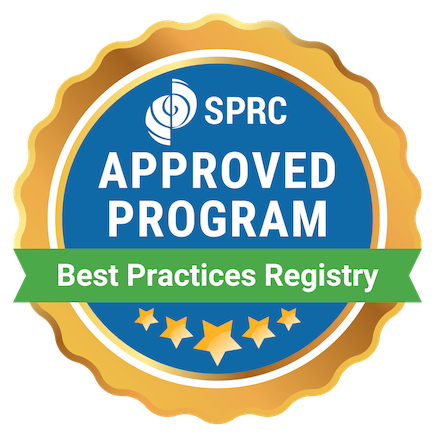
AMSR has been a trusted model for almost twenty-five years.
Since 2006, AMSR has trained clinicians on how to provide effective treatment for patients and clients who are at risk of suicide.
Over 120,000 health and behavioral health professionals in the United States and abroad have attended AMSR workshops.
Through our training-of-trainers model, we have authorized more than 300 trainers.
"This was the best presentation I have ever attended dealing with mental health issues—bar none."

Enhanced Evaluation
In 2019, the Zero Suicide Institute collaborated with Social Science Research and Evaluation (SSRE) to develop an enhanced evaluation of AMSR. Using a pre-and post-test design with a 90-day follow-up survey, AMSR-trained professionals showed statistically significant gains in knowledge.
AMSR participants reported increased skills in writing suicide risk assessments, synthesizing information into patient care management plans, and working collaboratively with patients to create safety plans. Self-reports of confidence and competence in assessing and managing suicidal patients increased significantly—results sustained even at the 90-day follow-up.
- 96% of participants reported satisfaction with the AMSR training experience, which includes the relevance of the information to their work with patients at risk for suicide or for their professional development.
- Over 91% of AMSR participants reported an increase in their confidence in developing a risk formulation for patients at risk of suicide.
About the Evaluation
AMSR have been evaluated twice with a third in process. The first reviewed pre- and post-training surveys from 668 trainings held by 121 organizations in the US between March 2017 and November 2018. This evaluation found that the AMSR training increased confidence and competence in assessing and managing suicidal patients and that training participants showed statistically significant improvements in knowledge (AMSR | Zero Suicide Institute, n.d.).
Participants had the most capacity/skill change gains from pre-test to posttest in their preparedness to write a straightforward and efficient risk assessment, synthesize information from the patient into a plan to manage their risk for suicide, and work collaboratively with a patient to develop a plan that outlines specific steps if they experience suicidal thoughts or triggers. These capacity and skill change findings were also sustained in the 3 months after the training. In the protocol and policy change areas, training participants reported the most pronounced changes in the need to review every “touchpoint” suicide risk, use a standard safety planning template that includes lethal means safety, and using a standard process for engaging a patient’s family and others in planning in case the patient has a crisis in the future. Finally, in the practice change areas, training participants had the most pronounced changes in their practice in three areas:
- Applying a template or outline to guide writing a suicide risk formulation
- Applying a standard set of practices to synthesize information into a plan to manage a patients’ risk for suicide
- Identifying and affirming a patient’s ambivalence about suicide when it is recognized
The second evaluation, published in 2019, measured whether AMSR and other similar trainings increased the level of confidence and practice among 137 providers located in three rural community behavioral health centers in Georgia. The results suggest that out of the other trainings included in the evaluation (QPR, CAMS, and Dialectical Behavioral Therapy), taking an AMSR training was a stronger predictor of participants having a “greater self-report of confidence on providing suicide-specific care.”